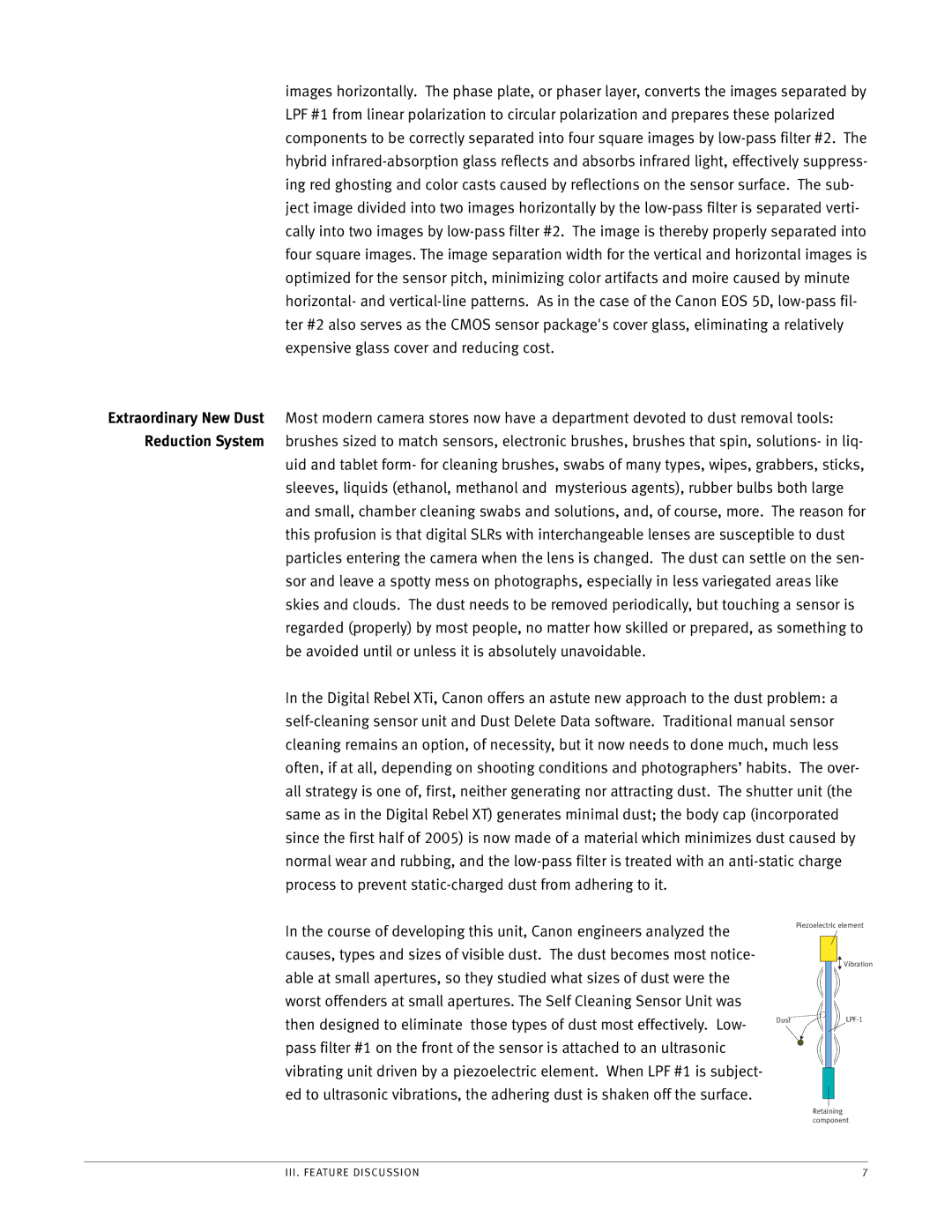
images horizontally. The phase plate, or phaser layer, converts the images separated by LPF #1 from linear polarization to circular polarization and prepares these polarized components to be correctly separated into four square images by
Extraordinary New Dust Most modern camera stores now have a department devoted to dust removal tools: Reduction System brushes sized to match sensors, electronic brushes, brushes that spin, solutions- in liq-
uid and tablet form- for cleaning brushes, swabs of many types, wipes, grabbers, sticks, sleeves, liquids (ethanol, methanol and mysterious agents), rubber bulbs both large and small, chamber cleaning swabs and solutions, and, of course, more. The reason for this profusion is that digital SLRs with interchangeable lenses are susceptible to dust particles entering the camera when the lens is changed. The dust can settle on the sen- sor and leave a spotty mess on photographs, especially in less variegated areas like skies and clouds. The dust needs to be removed periodically, but touching a sensor is regarded (properly) by most people, no matter how skilled or prepared, as something to be avoided until or unless it is absolutely unavoidable.
In the Digital Rebel XTi, Canon offers an astute new approach to the dust problem: a
In the course of developing this unit, Canon engineers analyzed the causes, types and sizes of visible dust. The dust becomes most notice- able at small apertures, so they studied what sizes of dust were the worst offenders at small apertures. The Self Cleaning Sensor Unit was then designed to eliminate those types of dust most effectively. Low- pass filter #1 on the front of the sensor is attached to an ultrasonic vibrating unit driven by a piezoelectric element. When LPF #1 is subject- ed to ultrasonic vibrations, the adhering dust is shaken off the surface.
iezP oelectricnt eleme
Vibration
Du |
ainiRet ng component
III. FEATURE DISCUSSION | 7 |
